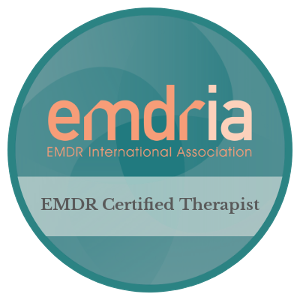Triggers can show up as smells, sounds, images, thoughts, emotions, or physical sensations. These cues can hijack your nervous system, sending you into a fight-or-flight state or causing you to shut down. These reactions often aren’t about what’s happening now—they’re rooted in past trauma.
EMDR helps recalibrate your internal alarm system. You’ll become less reactive to the past and more grounded in the present. As a result, those once-overwhelming triggers lose their grip on you.
 Some issues are hard to process.
Some issues are hard to process.
Traumatic events like car accidents, natural disasters, or violence can leave lasting effects. You may feel constantly on edge, bracing for something bad to happen again. Sometimes, even a small trigger can bring back intense feelings from that past event, making you relive the experience. Living with trauma can disrupt your emotional and physical well-being and make you feel stuck.
Trauma doesn’t always come from one event. Sometimes, it builds over time through repeated negative experiences and a lack of support or care afterward.
Unresolved and painful experiences from the past can also lead to anxiety or depression, making everyday life feel like a struggle.
Grief, loss, phobias, and other emotional wounds can linger, making it hard to move forward. Under these conditions, just living your life can feel overwhelming.
EMDR may be the solution to your problem.
Eye Movement Desensitization and Reprocessing (EMDR) is a proven, research-backed treatment for trauma, anxiety, depression, phobias, and more. The U.S. Department of Veterans Affairs ranks EMDR as one of its top-recommended therapies for treating combat trauma.
Studies have shown EMDR to be effective for people who have experienced sexual assault, survived natural disasters, and faced many other types of trauma. Therapists use it with adults and children, in individual and group settings, and even online.
EMDR uses a technique called Bilateral Stimulation (BLS), which activates different parts of your brain to help process painful and fragmented memories. BLS can involve tapping your knees, crossing your arms in a “butterfly hug,” moving your eyes back and forth, or listening to tones that alternate between your ears. While it might seem a bit unusual at first, BLS plays a key role in EMDR’s effectiveness.
 Desensitization helps minimize the effects of triggers.
Desensitization helps minimize the effects of triggers.
Triggers can show up as smells, sounds, images, thoughts, emotions, or physical sensations. These cues can hijack your nervous system, sending you into a fight-or-flight state or causing you to shut down.
These reactions often aren’t about what’s happening now—they’re rooted in past trauma.
EMDR helps recalibrate your internal alarm system. You’ll become less reactive to the past and more grounded in the present. As a result, those once-overwhelming triggers lose their grip on you.
Reprocessing Shifts Your Beliefs
EMDR also helps you reframe how you see yourself and your experiences. You can move from beliefs like “I’m damaged” or “I’ll never get over this” to thoughts that are more accurate, compassionate, and empowering.
And this shift doesn’t just happen in your mind—you’ll feel it. Your body, emotions, and thoughts will begin to align with your new beliefs. You’ll start to access your inner strengths and sense of agency more fully.
Over time, EMDR helps your brain and body connect more deeply. The parts of you that hold your strengths can start to communicate with the parts that carry pain and struggle.
 Recovery is possible!
Recovery is possible!
I’ve seen EMDR help clients heal more quickly and completely than with talk therapy alone.
I am certified in EMDR by the EMDR International Association (EMDRIA) and have used this approach for over seven years.
If you are ready to learn more about how EMDR can help you and get started, please schedule your FREE 15-minute phone consultation today!

